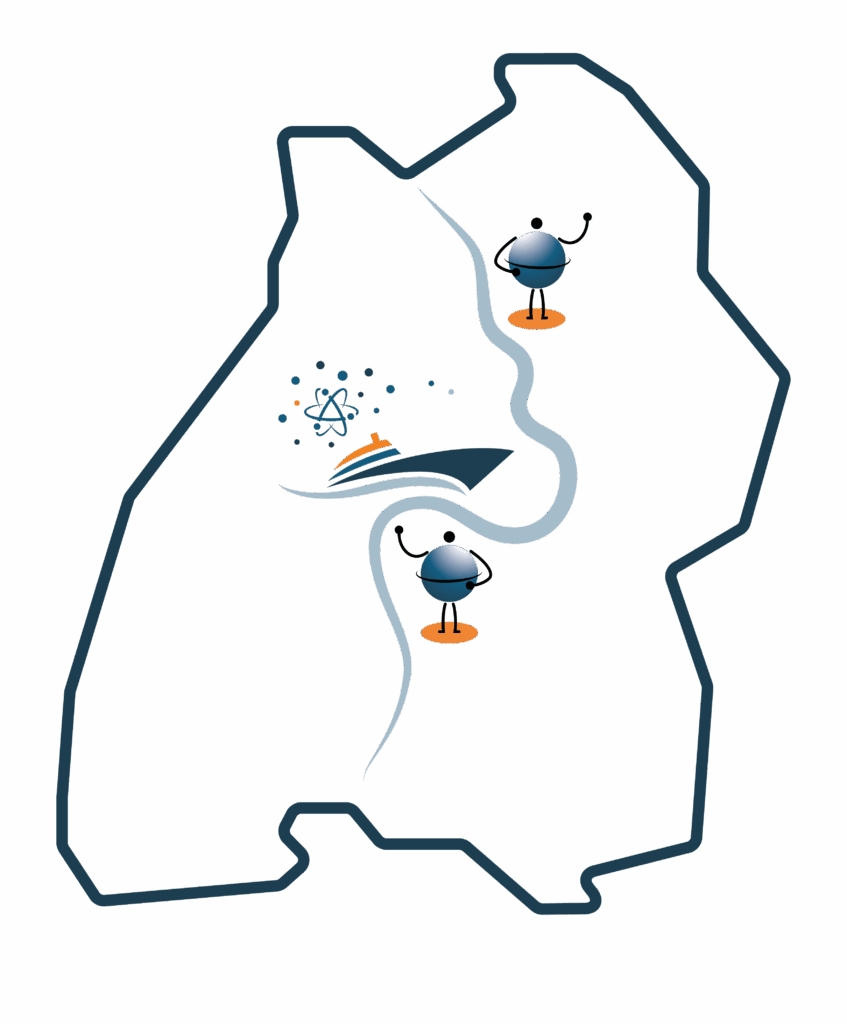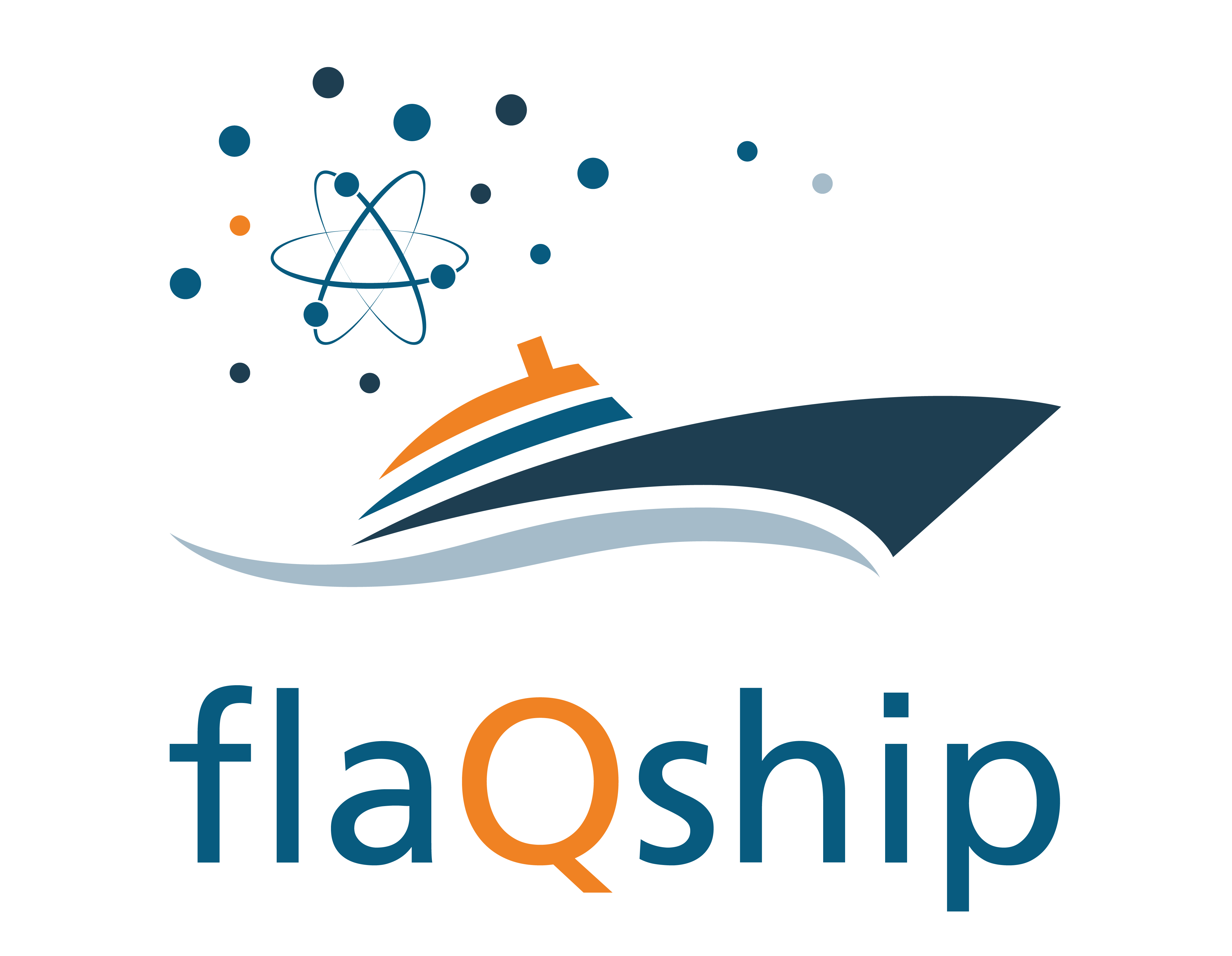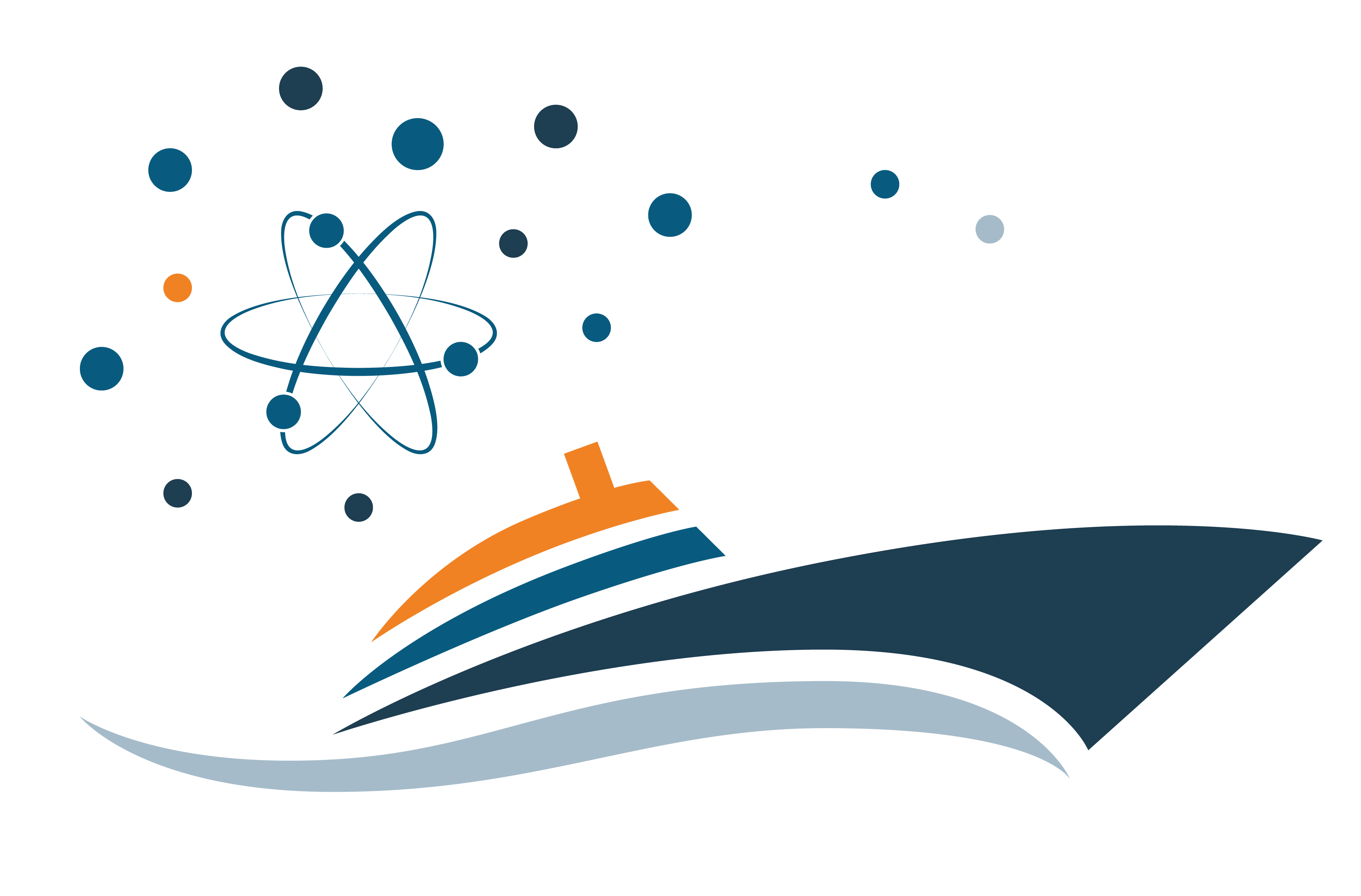Initiatives & Projects
At flaQship, we drive forward a variety of strategic initiatives, research collaborations, and industry projects.
Our work centers around the key locations of Stuttgart and Heilbronn—home to the Baden-Württemberg Competence Center for Quantum Computing and the Fraunhofer Heilbronn Research and Innovation Center for Applied Quantum AI.

Competence Center Quantum Computing Baden-Württemberg
The Competence Center Quantum Computing Baden-Württemberg (KQCBW) focuses on application-oriented (quantum) hardware-software co-design to prepare and empower companies in Baden-Württemberg for the use of this transformative technology. Our goal is to develop practical solutions that unlock the potential of quantum computing for real-world industrial applications.
- Quantum Algorithms for Industrial Applications
We develop new algorithms tailored for current Noisy Intermediate-Scale Quantum (NISQ) systems and future fault-tolerant quantum computers. - Spin-Based Quantum Hardware for Mobile Applications
We research and develop compact, high-performance quantum processors for mobile applications.
Publications:
- A. Sturm and N. Schillo (2025). „Efficient and Explicit Block Encoding of Finite Difference Discretizations of the Laplacian“.
url: https://doi.org/10.48550/arXiv.2509.02429 - L. Rullkötter, S. Weber, V. M. Katukuri, C. Tutschku, B. C. Mummaneni (2025). „Resource-efficient Variational Block-Encoding“.
url: https://doi.org/10.48550/arXiv.2507.17658
Forschungs- und Innovationszentrum für Anwendungsorientierte
Quanten-KI
The Research and Innovation Center for Applied Quantum AI approaches artificial intelligence (AI) and quantum computing (QC) as interrelated technologies with high integrative potential. By systematically combining quantum algorithms and AI methodologies, the center opens new avenues for advancing research, enabling industrial innovation, and addressing complex societal challenges.
- Quantum AI Algorithms & Use Cases
New algorithms and practical applications are paving the way to leverage the power of quantum computing for AI, enhancing its performance and expanding its capabilities. - Business Models and Tools for Quantum Technologies
To successfully transfer quantum technologies into industry and business, we develop forward-thinking business models and practical tools that facilitate real-world adoption. - Knowledge Transfer for Quantum AI
Through innovative educational and exchange formats with local partners, Quantum AI becomes accessible and hands-on. This accelerates the transfer of scientific knowledge into real-world applications. - Ecosystem Development and Enablement
A vibrant innovation environment emerges where research, industry, and policy come together to shape shared perspectives. Strategic partnerships and focused networks strengthen the ecosystem and foster sustainable technological progress.
Publications:
- S. Loos, F. Bickert, M. Dotzel, C. K. Tutschku, & S. Kaiser (2024). „Potenziale und Bedarfe des Quantencomputing-Ökosystems.“ In O. Riedel, K. Hölzle, W. Bauer, & B. Bienzeisler (Hrsg.),
url: https://doi.org/10.24406/publica-3632 - Y. Ji, M. Roth, D. A. Kreplin, I. Polian, F. K. Wilhelm (2025). „Data-Efficient Quantum Noise Modeling via Machine Learning“,
url: https://doi.org/10.48550/arXiv.2509.12933
Current Reference Projects
FullStaQD: Full Stack Quantum Computing for Germany
Mit dem Leitprojekt FullStaQD wird eine Quantencomputing-Software-Infrastruktur aufgebaut, die gleichberechtigt neben der Hardware steht. Unter Berücksichtigung der Kompatibilität und Interoperabilität verschiedener Komponenten untereinander wird so ein ganzheitlicher Quantencomputing Software Stack, ein »Full Stack« entwickelt.
INQUBATOR Fraunhofer Quantum Computing Testing and Consulting Center
With INQUBATOR, the Fraunhofer-Gesellschaft is establishing an innovative testing and consulting center that offers companies an easy, practical introduction to quantum computing. Four Fraunhofer Institutes are pooling their expertise in quantum hardware-software-co-design and working with industry partners, especially SMEs, to develop application-oriented use cases.
QuantumBW
QuantumBW ist die Dachinitiative für Quantentechnologie-Aktivitäten in Baden-Württemberg. Sie vernetzt Forschung und Industrie, um ein zukunftsorientiertes Ökosystem zu stärken. Dazu entwickeln wir gezielte Formate des Wissenstransfers, die technologische Entwicklungen fördern, interdisziplinären Austausch ermöglichen und die Community nachhaltig miteinander verbinden.
H2Giga - Series Production of Electrolyzers for Hydrogen Generation
H2Giga is dedicated to developing scalable, serial production of electrolyzers—following a technology-open approach. Established electrolyzer manufacturers, suppliers from various technology sectors (including many small and medium-sized enterprises), as well as research institutions and universities, are working together to advance existing electrolyzer technologies and methods for mass production.
Publications:
- R. F. Ablan, M. Roth, J. Schnabel (2025). „On the similarity of bandwith-tuned quantum kernels and classcial kernels“. In: Quantum Sci. Technol. 10 035051.
url: https://doi.org/10.1088/2058-9565/ade7ad - D. A. Kreplin and M. Roth (2024). “Reduction of finite sampling noise in quantum neural networks”. In: Quantum 8, p. 1385.
url: https://doi.org/10.22331/q-2024-06-25-1385.
Completed Reference Projects
AutoQML—Developer Suite for Automated Machine Learning with Quantum Computers
As part of the collaborative project AutoQML, flaQship and seven partners from research and industry have developed the application software of the same name. The open-source software AutoQML combines quantum computing and machine learning. It enables developers to use quantum machine learning algorithms without requiring in-depth expertise.
Publications:
- D. Basilewitsch, J. F. Bravo, C. Tutschku, F. Struckmeier (2025). „Quantum neural networks in practice: a comparative study with classical models from standard data sets to industrial images“. In Quantum Mach. Intell. 7, 110.
url: https://doi.org/10.1007/s42484-025-00336-7 - D. Pranjić, B. C. Mummaneni, C. Tutschku (2025). “Quantum Annealing based Feature Selection”. In: Neurocomputing,
url: https://doi.org/10.1016/j.neucom.2025.131673. - D. A. Kreplin, M. Willmann, J. Schnabel, F. Rapp, M. Hagelüken, M. Roth (2025). “sQUlearn: A Python Library for Quantum Machine Learning”. In: IEEE Software 01, pp. 1–6.
url: https://doi.ieeecomputersociety.org/10.1109/MS.2025.3527736. - M. Roth, D. A. Kreplin, D. Basilewitsch, J. F. Bravo, D. Klau, M. Marinov, D. Pranjić, P. Schichtel, H. Stuehler, M. Willmann, M. Zoeller (2025). „AutoQML: A Framework for Automated Machine Learning,“ in 2025 IEEE International Conference on Quantum Software (QSW), Helsinki, Finland, 2025, pp. 81-91,
url: https://doi.ieeecomputersociety.org/10.1109/QSW67625.2025.00019 - H. Stühler and D. Pranjic (2025) „Quanten-maschinelle Lernmethoden in der Preisprognose von gebrauchten Baumaschinen“. In Zeitschrift für wirtschaftlichen Fabrikbetrieb, vol. 120, no. 5, pp. 352-357.
url: https://doi.org/10.1515/zwf-2024-0163 - D. Pranjić, B. C. Mummaneni, C. Tutschku (2024). “Quantum Annealing based Feature Selection in Machine Learning”.
url: https://doi.org/10.48550/arXiv.2411.19609. - D. Basilewitsch, J. F. Bravo, C. Tutschku, F. Struckmeier (2024). “Quantum Neural Networks in Practice: A Comparative Study with Classical Models from Standard Data Sets to Industrial Images”.
url: https://doi.org/10.48550/arXiv.2411.19276. - F. Rapp and M. Roth (2024). “Quantum Gaussian process regression for Bayesian optimization”. In: Quantum Machine Intelligence 6.5 (1).
url: https://doi.org/10.1007/s42484-023-00138-9. - H. Stühler, D. Klau, M.-A. Zöller, A. Beiderwellen-Bedrikow, C. Tutschku (2024). “End-to-End Implementation of Automated Price Forecasting Applications”. In: SN Computer Science 5(402).
url: https://doi.org/10.1007/s42979-024-02735-2. - H. Stühler, D. Pranjić, Christian Tutschku (2024). “Evaluating Quantum Support Vector Regression Methods for Price Forecasting Applications”. In Proceedings of the 16th International Conference on Agents and Artificial Intelligence – Volume 3: ICAART.
url: https://doi.org/10.5220/0012351400003636. - J. Berberich, D. Fink, D. Pranjić, C. Tutschku, C. Holm (2023). “Training robust and generalizable quantum models”.
url: https://doi.org/10.48550/arXiv.2311.11871. - D. Klau, H. Krause, D. A. Kreplin, M. Roth, C. Tutschku, M. Zöller (2023). “AutoQML – A Framework for Automated Quantum Machine Learning”.
url: https://www.digital.iao.fraunhofer.de/content/dam/iao/ikt/de/documents/AutoQML_Framework.pdf. - D. Klau, M. Zöller, C. Tutschku (2023). “Bringing Quantum Algorithms to Automated Machine Learning: A Systematic Review of AutoML Frameworks Regarding Extensibility for QML Algorithms”.
url: https://doi.org/10.48550/arXiv.2310.04238. - H. Stühler, M.-A. Zöller, D. Klau, A. Beiderwellen-Bedrikow, C. Tutschku (2023). “Benchmarking Automated Machine Learning Methods for Price Forecasting Applications”.
url: https://doi.org/10.5220/0012051400003541.
Innovation Concept "QC Next": Quantum Computing Software Stack
In this preliminary project, a comprehensive innovation concept was developed, outlining how to create a unified, widely adopted framework for the quantum computing software stack. Seamless integration of the different layers of the stack—from hardware to application—is made possible primarily through interface solutions and standardization, taking into account both technological requirements and user-driven use cases. The concept supports the transition of quantum technologies from the lab to real-world applications (“Lab to Fab”).
SEQUOIA End-to-End - Transparent Quantum Software Engineering and Algorithm Design for Application-Centered End-to-End Solutions
The collaborative research project SEQUOIA End-to-End aimed to harness the potential of quantum computing for industrial use. It focused on identifying and addressing current bottlenecks throughout the quantum software development process, transforming them into high-performance, automated, and controllable end-to-end solutions for real-world industrial applications. These solutions build on the methods and tools for industrial quantum computing developed in the predecessor project SEQUOIA, based on eight practical use cases.
Publications:
- M. Albus, M. Roth, J. Schnabel, M. Willmann (2025). „Application of quantum annealing for scalable robotic assembly line optimization: a case study“. In: Procedia CIRP (134), pp. 25–30.
url: https://www.sciencedirect.com/science/article/pii/S2212827125004986 - F. Rapp, D. A. Kreplin, M. F. Huber, M. Roth (2025). “Reinforcement learning-based architecture search for quantum machine learning”. In: Mach. Learn.: Sci. Technol.
url: https://doi.org/10.1088/2632-2153/adaf75. - P.-A. Matt and M. Roth (2024). A heuristic for solving the irregular strip packing problem with quantum optimization.
url: https://doi.org/10.48550/arXiv.2402.17542. - N. Schillo (2024). “Quantum Algorithms and Quantum Machine Learning for Differential Equations”.
url: http://dx.doi.org/10.18419/opus-13866. - N. Schillo and A. Sturm (2024). “Quantum Circuit Learning on NISQ Hardware”.
url: https://doi.org/10.48550/arXiv.2405.02069. - A. Sturm, B. C. Mummaneni, L. Rullkötter (2024). “Unlocking Quantum Optimization: A Use Case Study on NISQ Systems”.
url: https://doi.org/10.48550/arXiv.2404.07171. - G. Koßmann, L. Binkowski, C. Tutschku, R. Schwonnek (2023). “Open-Shop Scheduling with Hard Constraints”.
url: https://doi.org/10.48550/arXiv.2211.05822. - A. Sturm (2023). “Theory and Implementation of the Quantum Approximate Optimization Algorithm: A Comprehensible Introduction and Case Study Using Qiskit and IBM Quantum Computers”.
url: https://doi.org/10.48550/arXiv.2301.09535. - C. Tutschku, A. Sturm, F. Knäble, B. C. Mummaneni, D. Pranjic, C. Stephan, D. B. Mayer, G. Koßmann, M. Roth, P.-A. Matt, A. Grigorjan, T. Wellens, K. König, M. Beisel, F. Truger, F. Shagieva, O. Denninger, S. Garhofer (2023). “Quantencomputing in der industriellen Applikation. Vom Algorithmen-, Markt- und Hardwareüberblick hin zu anwendungszentriertem Quantensoftware-Engineering“.
url: https://doi.org/10.24406/publica-805. - SEQUOIA: P.-A. Matt, R. Ziegler, D. Barjovic, M. Roth, M. F. Huber (2022), “A Nested Genetic Algorithm for Explaining Classification Data Sets with Decision Rules”. url: https://doi.org/10.48550/arXiv.2209.07575.
AQUAS - Application of Quantum Simulations in Hydrogen Research
The AQUAS project aims to elevate hydrogen research and production through the use of quantum simulation. By enabling precise simulations of electrolyzer materials, it seeks to significantly improve process efficiency. This will be achieved through the validation and implementation of innovative software tools utilizing hybrid classical-quantum algorithms. The project focuses on preparing algorithms that are ready to run on current and future error-aware quantum hardware.
Publications:
- M. Hagelüken, M. F. Huber, and M. Roth (2025). „Data Efficient Prediction of excited-state properties using Quantum Neural Networks“. In: New Journal of Physics 27(054508)
url: https://doi.org/10.1088/1367-2630/add203. - J. Schnabel and M. Roth (2025). „Quantum Kernel Methods Under Scrutiny: A Benchmarking Study“. In: Quantum Machine Intelligence 7(58).
url: https://doi.org/10.1007/s42484-025-00273-5

